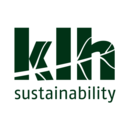Managing packaging waste streams
In the latest blog post by --KLH Sustainability, Ritu Rajashekar considers waste streams on site and highlights the hidden impact of packaging.
The UK construction industry uses enormous quantities of materials, but only about half of construction and demolition waste is recycled or reclaimed. Studies have revealed that about 34% of waste from construction sites is packaging waste consisting of timber, cardboard, plastic, and so on. Packaging is necessary to protect products from damage, however, intelligently designed packaging and consideration of logistic arrangements early in the construction process can significantly reduce waste.
The European Commission is currently reviewing key targets under the Waste Framework Directive, the Landfill Directive and the Packaging and Packaging Waste Directive, with the intention of bringing targets in line with the Commission’s ambitions of promoting resource efficiency and reducing greenhouse gas emissions. Although the UK Government does not yet support these revised targets, if applied, they would require businesses to roll up their sleeves and do some hard number crunching.
The UK Government fears that in the current economic climate it may not be possible to achieve existing EU targets let alone the revised ones. But many believe that having these regulations will help cut costs for the industry. Estimates suggest that fully enforcing EU legislation on waste could save 72 billion euros a year, boost the annual turnover of EU waste management and recycling firms by 42 billion euros, and create over 400,000 jobs by 2020.
Recent analysis carried out on the Media Centre project for London 2012 revealed that whilst only 469 tonnes of timber was officially delivered to site for use in the construction works, around 907 tonnes of timber was skipped. The majority of skipped timber was associated with packaging, raising an interesting question about material efficiency and the use of sustainable timber.
Waste forecasts have historically focussed on construction products used on site, and even new tools such as Building Information Modelling which can significantly reduce waste on site do not provide transparency and forecasting for packaging waste. So packaging is largely an ‘unseen’ waste stream and cost, until it turns up in the skip.
It is important to interrogate data to understand packaging waste streams in detail. Information is key to engaging sub-contractors and suppliers in challenging the extent of packaging brought to site, and where possible enabling the return of packaging on the delivery back haul or identifying alternative uses for packaging waste.
[edit] Related articles on Designing Buildings Wiki
- 5 things leaders can do to create a truly circular economy.
- Building information modelling.
- Recyclable construction materials.
- Recycling.
- Site waste management plans.
- Site Waste Management Plans – A Necessary Burden.
- Wishcycling.
[edit] External references
- CECA: Waste Classification & Permitting In Construction. February 2018. Free download.
About the wiki
Anyone is welcome to use and contribute to the wiki in different ways.
[edit] Engaging with the wiki
You can:
- Contribute to existing articles
- Create articles
- Share articles through social media and other channels
- Contact the CIRCuIT project to let us know what you think and how we can improve
[edit] Add your own content
To contribute to or create an article, you can follow these steps:
- Register as a user
- Read through the editorial policy and guidance on writing and contributing to articles
- See the detailed help page on tips on writing wiki articles
- Try editing a test article
- If editing an article, select 'Edit this article' underneath the article title
- If creating a new article, select 'Create an article'. In the 'Select categories' area, expand the 'Industry context' list and tag 'Circular economy' to add your article to this wiki
[edit] Who is this wiki for?
The articles contain information on implementing circular economy approaches in construction that could be relevant to:
- Architects
- Construction contractors
- Designers
- Developers, owners, investors
- Engineers
- Landowners
- Manufacturers and supplier
- Universities and research
- Urban planners
[edit] About CIRCuIT
The Circular Economy wiki is supported by the Circular Construction in Regenerative Cities (CIRCuIT) project, which is funded by the European Union's Horizon 2020 research and innovation programme. CIRCuIT is a collaborative project involving 31 ambitious partners across the entire built environment chain in Copenhagen, Hamburg, Helsinki Region and Greater London. Through a series of demonstrations, case studies, events and dissemination activities, the project will showcase how circular construction practices can be scaled and replicated across Europe to enable sustainable building in cities and the transition to a circular economy on a wider scale.







